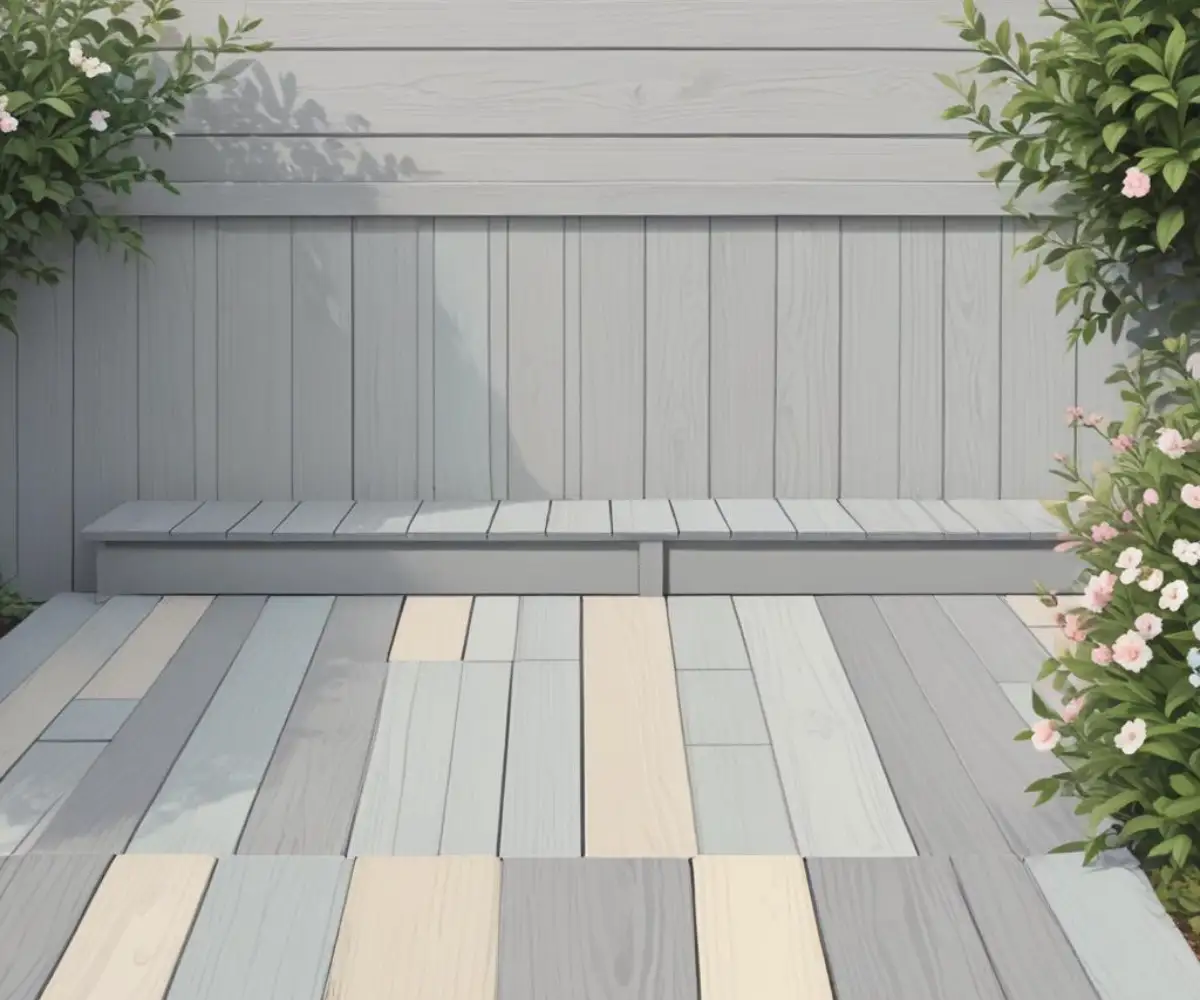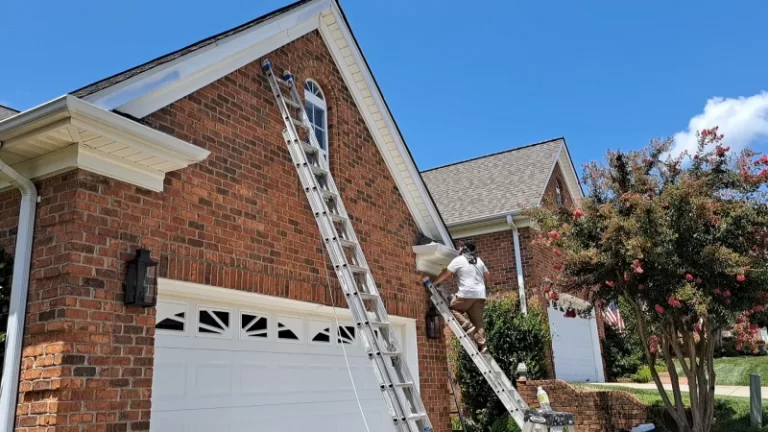Trex Enhance End Caps Missing? The Pro Finish You Need Now
You’ve invested in a beautiful Trex Enhance deck, known for its durability and low-maintenance appeal. But as you admire your new outdoor space, a glaring issue catches your eye: the unfinished, exposed ends of the deck boards. This raw look can cheapen the overall aesthetic, creating a frustrating eyesore that detracts from your otherwise perfect deck.
The problem lies with the unique design of Trex Enhance decking. Many boards in this popular line feature a scalloped bottom, which reduces weight and cost but leaves an unsightly profile when cut. Your natural instinct is to search for “Trex Enhance end caps,” assuming a simple plastic cover will solve the problem, only to find the search results confusing and fruitless.
You'll Learn About
Why Your Search for Trex Enhance End Caps Leads to a Dead End
The core of the issue is that Trex does not manufacture push-in style end caps for its Enhance decking line. While end caps are common for some hollow composite boards, Trex has engineered its products for more integrated and professional finishing methods. The scalloped profile of Enhance boards makes creating a universal, secure, and attractive end cap challenging.
Relying on ill-fitting, third-party caps or makeshift solutions can lead to more problems. These can include poor color matching, caps popping off due to temperature changes, and creating spaces where water and debris can collect. Instead of a quick fix, the solution is to embrace the professional techniques recommended by Trex and expert builders. For a broader look at this topic, understanding does Trex make end caps in general provides helpful context.
The Superior Solution: Professional Finishing Techniques
To achieve a truly polished and durable finish for your Trex Enhance deck, two primary methods stand out: picture framing and installing a raised fascia board. These techniques are not just cover-ups; they are integral design elements that elevate the look of your deck, protect the board ends, and ensure a long-lasting, high-quality result. They are the definitive answer to finishing the edges of your deck correctly.
These methods use the same durable Trex material for a perfect match in color and texture. They also properly account for the natural expansion and contraction of composite materials, preventing warping and gaps over time. By adopting these professional standards, you transform an unfinished edge into a deliberate, high-end design feature.
Method 1: Picture Framing for a Definitive, High-End Border
Picture framing is widely considered the best way to finish any composite deck. This technique involves installing one or more rows of deck boards around the perimeter of your deck, running perpendicular to the main boards. This creates a beautiful, intentional border that cleanly hides all the cut ends of the interior boards.
This method offers significant aesthetic appeal, allowing you to use either a matching color for a subtle finish or a contrasting color for a bold, custom look. Crucially, picture framing requires solid, square-edge boards for the border, not the grooved-edge boards used with hidden fasteners in the main deck area. This ensures a clean, professional look without unattractive grooves on the visible edge of your deck.

How to Install a Picture Frame Border
Installing a picture frame requires planning during the deck framing stage. Extra blocking must be added around the perimeter to properly support the ends of the main deck boards and the picture frame boards themselves. This ensures a solid, stable surface with no sagging.
First, install the main field of your deck, stopping short of the final edge to leave room for the border boards. Then, carefully measure and make 45-degree miter cuts at the corners of your square-edge border boards. Secure these boards to the blocking and rim joists using recommended composite deck screws for a strong, lasting hold.
Method 2: Using Fascia Boards for a Clean and Modern Edge
Another excellent method for finishing your Trex Enhance deck is to use matching fascia boards. Fascia boards are thinner, wider boards designed to cover the rim joists and deck structure. When installed flush with the top of the decking surface, they effectively hide the scalloped ends of the deck boards, providing a crisp, clean vertical finish.
This approach is simpler than picture framing and creates a sleek, minimalist aesthetic. Trex offers fascia in colors that perfectly match the Enhance decking lines, ensuring a seamless and cohesive look. Proper installation is key to prevent warping, as fascia boards expand and contract with temperature changes.
How to Install Raised Fascia
To install fascia, the main deck boards should be cut flush with the outer edge of the deck’s frame. The fascia board is then lifted up and secured directly to the rim joist, with its top edge sitting perfectly level with the decking surface. It’s critical to use fasteners specifically designed for composite fascia.
These specialized screws allow the board to move slightly as it expands and contracts, which prevents the buckling or “wavy” look that can occur with improper fastening. Always follow Trex’s guidelines, which typically recommend fastener placement every 12 to 18 inches along the board to ensure it remains straight and secure through all seasons.
Comparing Your Deck Finishing Options
Choosing between picture framing and using fascia depends on your desired aesthetic, budget, and the complexity of your deck design. Both offer a far superior result to searching for nonexistent end caps. Understanding the differences will help you make the best decision for your project.
Each method provides a durable, manufacturer-approved way to get that polished look. Here is a breakdown of the key factors to consider for each technique.
| Feature | Picture Framing | Raised Fascia | Third-Party End Caps |
|---|---|---|---|
| Aesthetic | High-end, custom look with a defined border. | Clean, minimalist, and modern vertical edge. | Often looks cheap; difficult to match color and texture. |
| Durability | Extremely high; uses durable deck boards. | High; uses matching, weather-resistant fascia. | Low to moderate; can pop off, crack, or fade. |
| Cost | Higher due to extra framing and deck boards. | Moderate; requires fascia boards and special screws. | Low initial cost, but may require replacement. |
| Installation | More complex; requires miter cuts and extra blocking. | Simpler; attaches directly to the rim joist. | Simple push-in or glue-on application. |
The Unspoken Risk of DIY “Solutions”
In the quest for a quick fix, some may be tempted by painting the ends or trying to find a generic plastic cap. While painting can temporarily camouflage the exposed core, it’s not a permanent solution and will likely need reapplication as it weathers. It does not provide the clean, dimensional finish of a proper border.
Third-party caps present their own set of problems. Composites expand and contract significantly with temperature. A small plastic cap glued or forced into the end of a board is fighting against this powerful thermal movement. This often results in the cap breaking its seal or popping out, leaving you back where you started, but with potential glue residue to clean up.
The Final Word on Finishing Your Trex Enhance Deck
Stop the frustrating search for Trex Enhance end caps. The premium finish you desire cannot be achieved with a simple push-on cap. The true solution is to use the professional methods that work with the material’s properties, not against them. Both picture framing and installing a raised fascia board provide a beautiful, durable, and manufacturer-endorsed finish.
By investing the time and effort into one of these proven techniques, you complete your deck with a polished, intentional design. This not only enhances its beauty and value but also ensures its longevity. You will have an outdoor space that looks truly finished and professional from every angle.
Frequently Asked Questions
What are Trex Enhance end caps?
Trex Enhance end caps are plastic covers designed to fit over the exposed ends of Trex Enhance decking boards. While Trex does not manufacture official end caps for their decking, some third-party companies offer them to provide a finished look and hide the scalloped ends of the boards.
Why doesn’t Trex make end caps for Enhance decking?
Trex decking, including the Enhance line, is designed with a solid or scalloped core, not a hollow one. Therefore, end caps are not considered necessary to prevent moisture or debris from entering the boards. Trex instead recommends alternative finishing methods for a clean, professional appearance.
What are the alternatives to using end caps on Trex Enhance decking?
Trex recommends two primary methods for finishing the ends of your deck boards: picture framing and using fascia boards. Picture framing involves installing a border of deck boards around the perimeter, while fascia boards are thin boards that cover the edges for a seamless look. Both options provide a polished finish and can add to the deck’s durability.
Can I buy end caps for Trex Enhance decking from other manufacturers?
Yes, there are third-party manufacturers that sell end caps designed to fit Trex Enhance decking boards. These are often made of plastic and come in various colors to match different Trex decking lines. They can be installed using a plastic-friendly glue.
What is “picture framing” a deck?
Picture framing is a finishing technique where deck boards are installed around the perimeter of the main deck surface, similar to a picture frame. This method effectively hides the cut ends of the main deck boards. You can use either a matching or a contrasting color for the frame to create a custom look.

